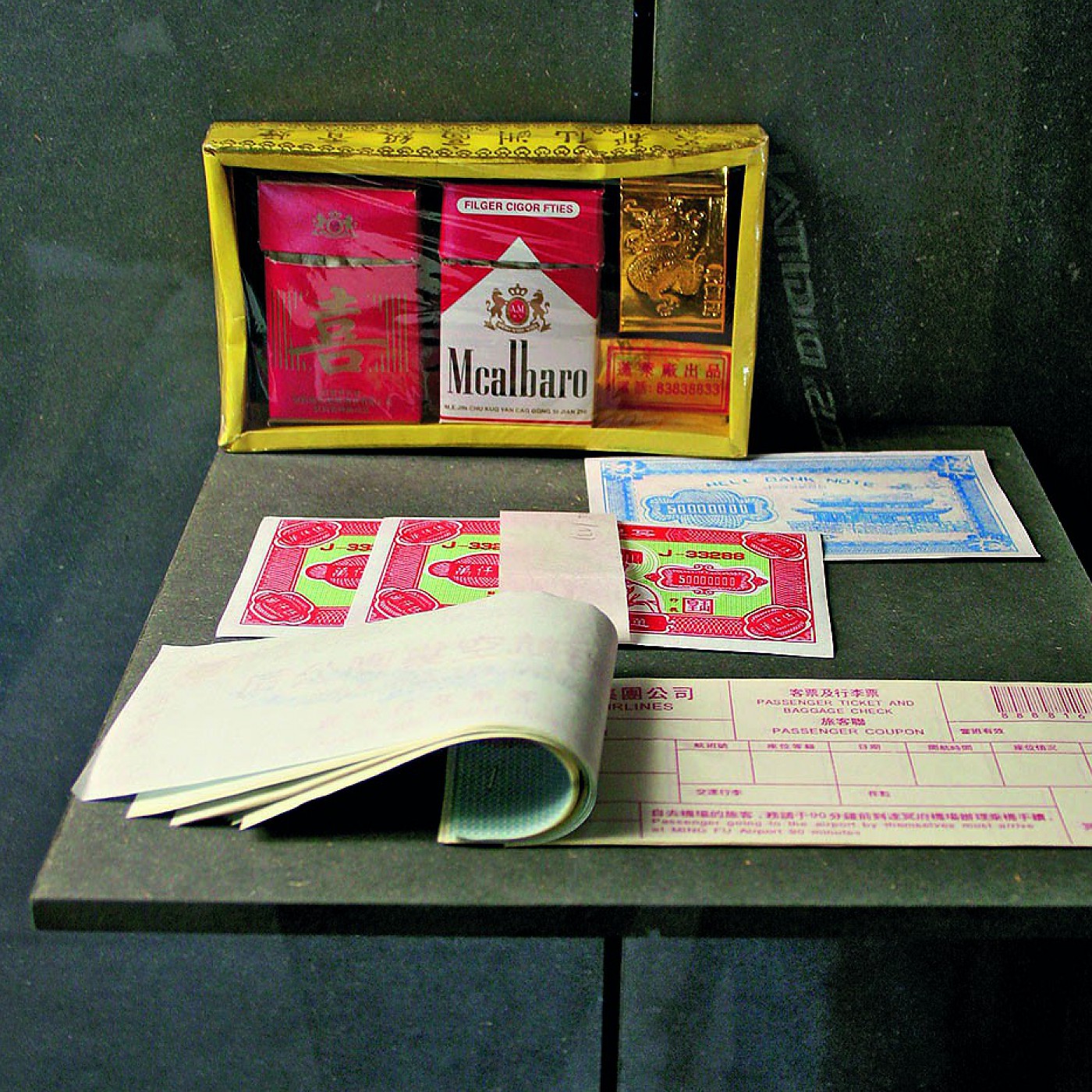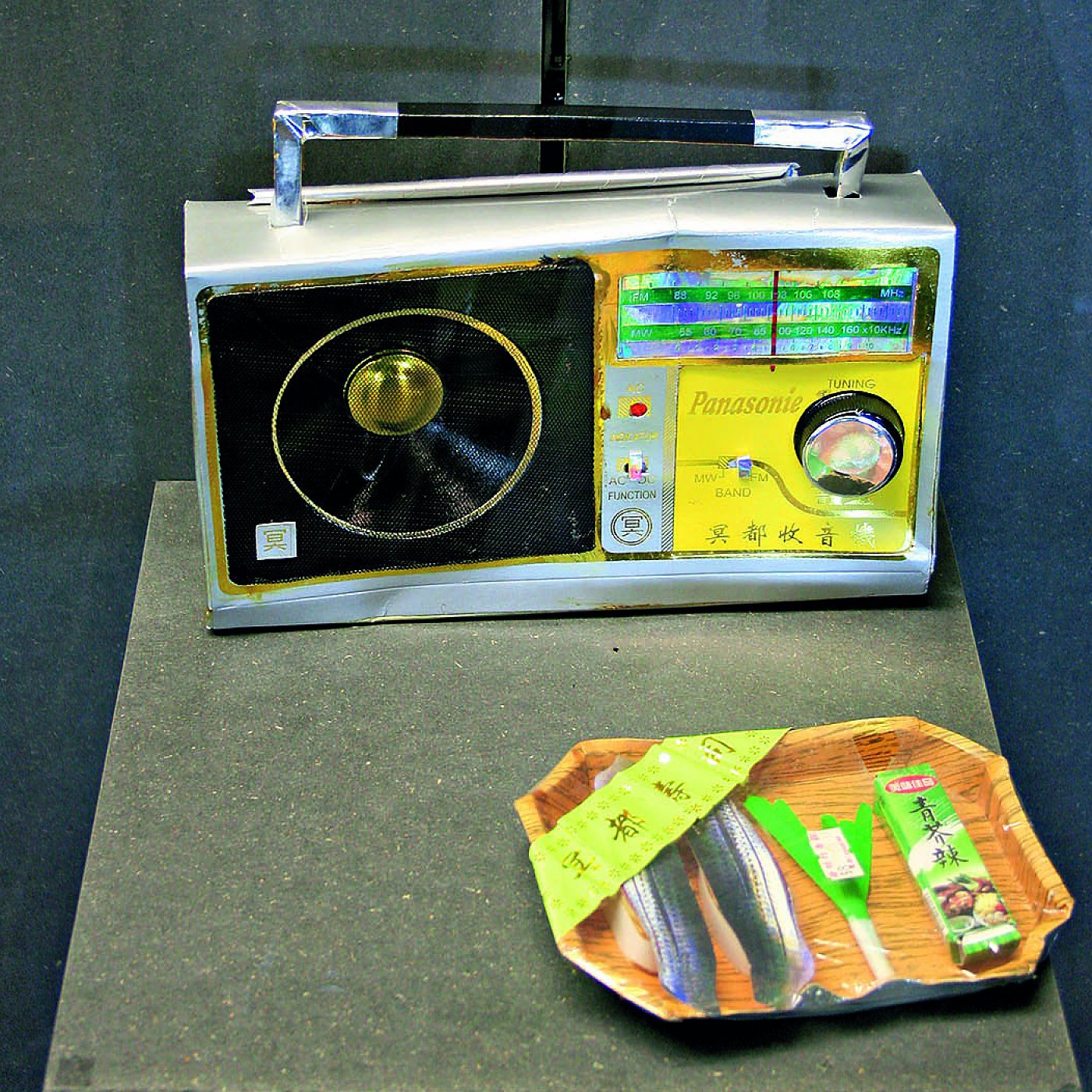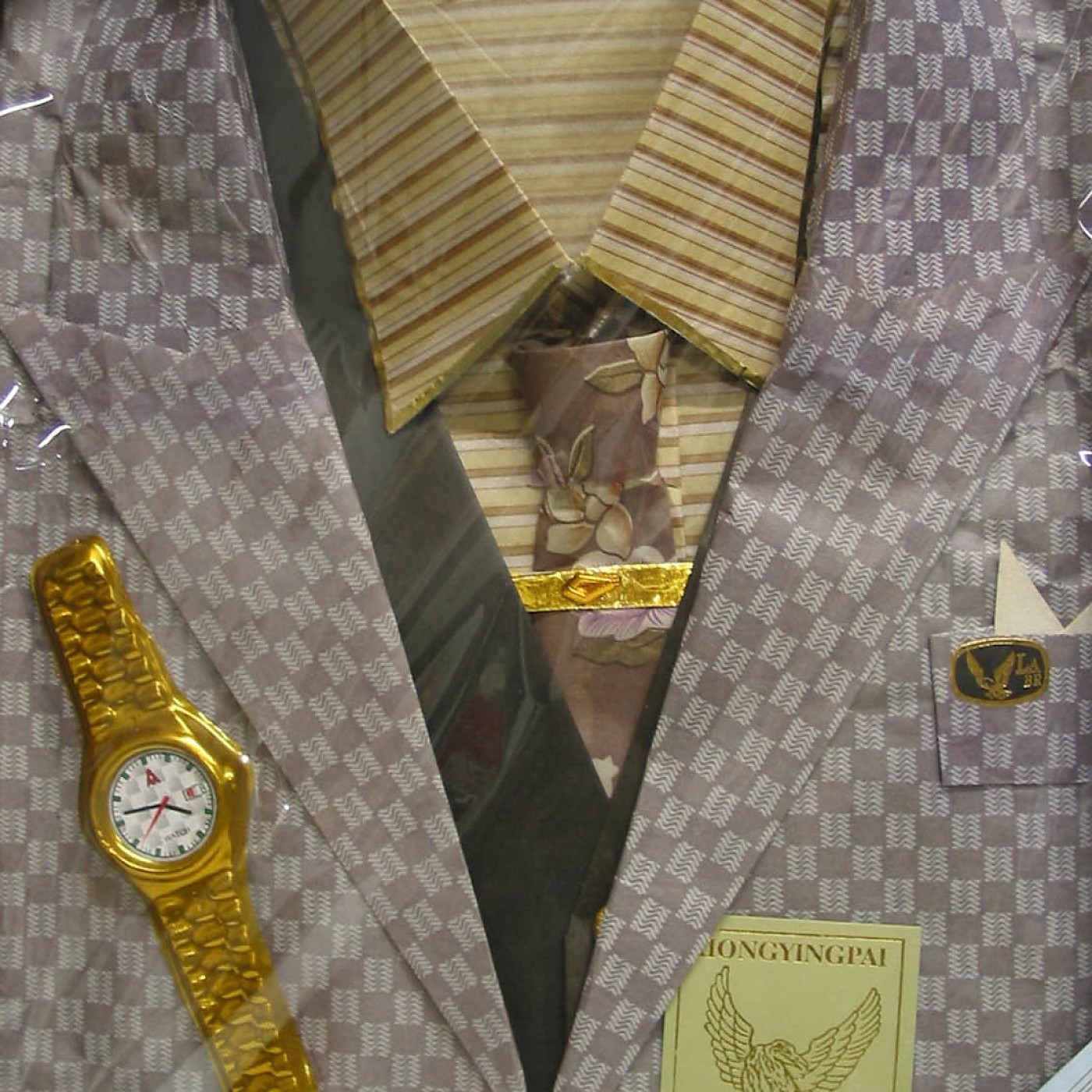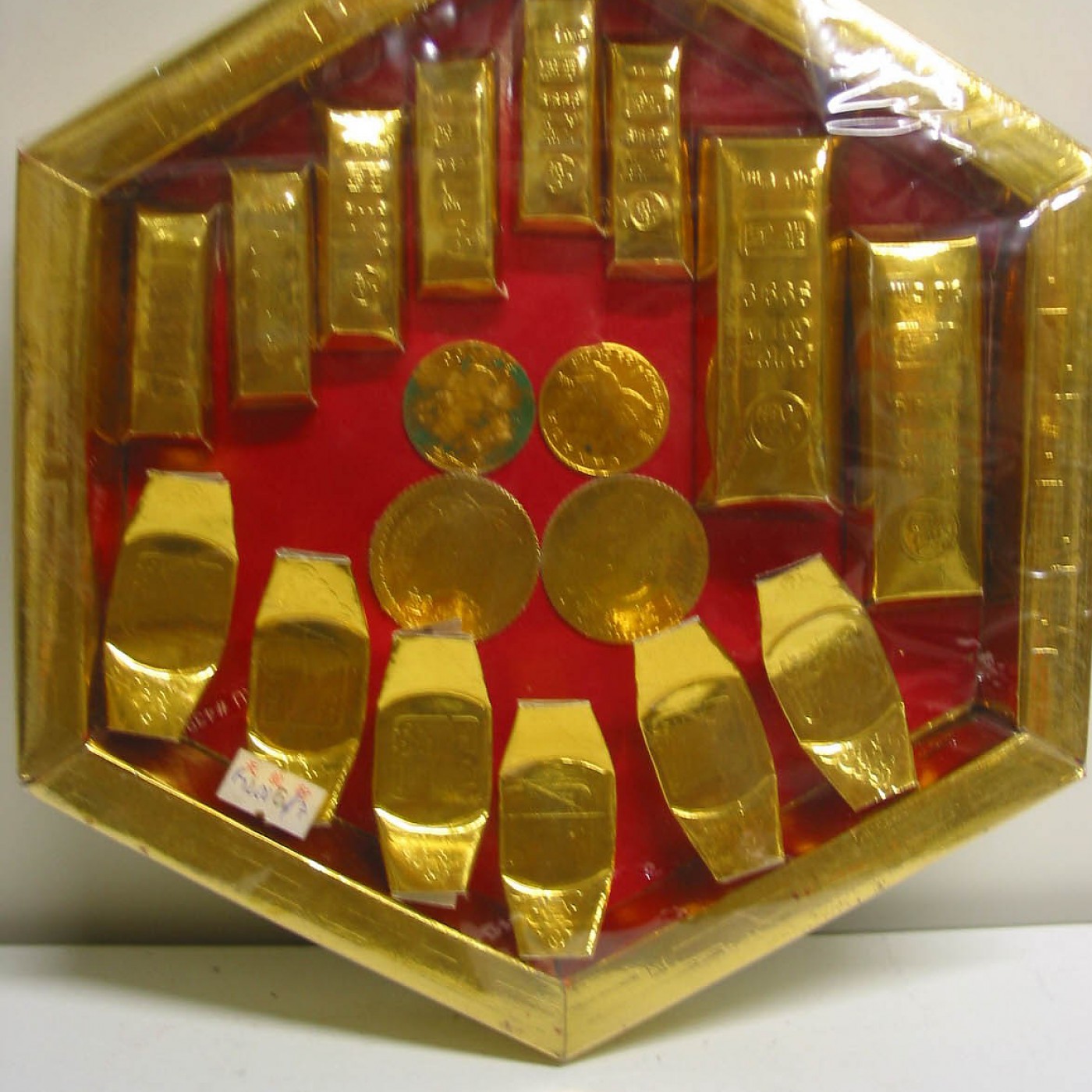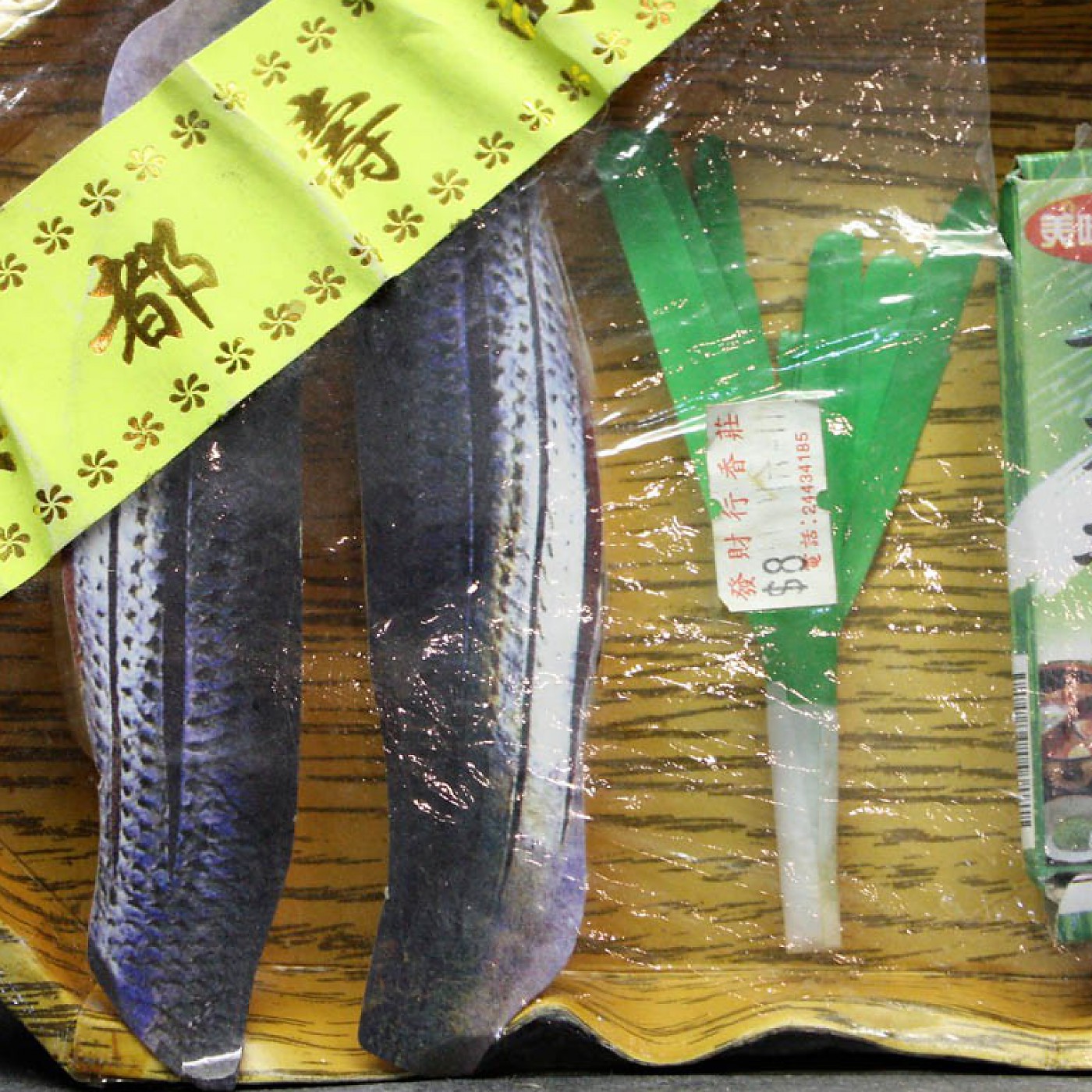Chinese paper offerings from China
In the permanent exhibition of the Museum of Sepulchral Culture, which focuses on Central Europe, some of the few ethnological objects from China can be found: in addition to colorful banknotes from the Bank of Hell, a cardboard radio and other paper models of everyday objects can be seen. These are not play money and toys for children, but gifts for the ancestors. These are an important part of Chinese culture, as the welfare of the ancestors is of the utmost importance in China for that of their living descendants. In China, burials are more important than birth rituals and weddings, because their correct execution, together with the manner of death, determines the further existence of the souls of the deceased and thus also their relationship with the living. Although there is a great variety of religions and cultures in China, at least the funeral customs and ideas of the afterlife can be compared and summarized well. For in them elements of all three predominant scriptural religions of China combine with the Chinese "people's religion". Here it becomes apparent how closely the different religions are interwoven in the everyday life of people. "The Confucian ancestor cult demands the inclusion of the dead in the life of people; one is responsible to one's ancestors for one's behaviour and can expect from them protection and blessing for it.
A main purpose of Daoist practices is to prolong life, ideally immortality. For the actual death it is comforting to know that Buddhism promises a rebirth and a future paradise. All three attitudes are to be found in the popular religious sphere (which may well include scholarly families).5 It is precisely the Confucian teaching of obedience of children to their parents that shapes the relationship of the living to the dead, for whom they take responsibility and who continue to care for them after death. In addition to a properly conducted funeral, this includes regular offerings to the ancestors, who have the same needs in the hereafter as people in this world. In China it is assumed that people have at least two souls, a body soul and a breathing soul. While the body soul remains in the grave after burial and passes away with the body, the breathing soul is immortal. If the death rituals are performed correctly, this breathing soul becomes an ancestor. It can protect the family and bring prosperity and health to the family. If an ancestor is neglected, this arouses his anger. He deprives his family of his protection and punishes them. However, if the death rituals are not properly performed, the breathing soul cannot be transformed into an ancestor and the body soul cannot descend into the grave. Instead, they become dangerous spirits that can persecute and even kill the living. Against this background the great importance of burial rituals and their correct execution becomes understandable. How a person is buried depends on age and the wealth of the family. Old people who have grandchildren and can become ancestors receive very elaborate funerals, while children receive simpler funerals. When a person has died, family, friends, acquaintances and neighbours are informed. Since death is generally considered dangerous, children and pregnant women should not come near the body.
In the course of the complex preparations the body is washed and dressed. Then ritual paper money, so-called ghost money, a ritual passport and other things for the journey to the afterlife are burned. Once the body has been buried, the coffin is filled with ritual money and sealed. In a procession it is now brought to the chosen place of burial, which was previously chosen by a geomancer, i.e. a "Feng Shui expert". This procession is interrupted again and again for offerings to different spirits. Arriving at the grave, further offerings are made, now to the deceased himself. These offerings, which consist mainly of ghost money and paper objects, are supposed to guarantee the dead a good start in the hereafter and to make them feel well. Also food offerings are placed at the grave. After the coffin has been lowered into the tomb, a pedigree is placed on it and the soul of the*r dead person is asked to enter it. After the ritual the pedigree is considered to be inhabited and is brought back home in a procession. Once there, the mourners take off their mourning clothes and eat a banquet together, which also consists of the food offerings made at the grave and emphasizes the community of the living and the dead. In the course of further rituals that are carried out in the next days and weeks, as well as during the annual commemorations of the dead, further offerings are made. Through these the deceased are provided with everything they need for a pleasant existence in the hereafter. The needs of the ancestors are largely covered by those of the living, as this world and the hereafter are very similar. Before and during the burial it is mostly about objects that are needed for the journey into the hereafter. For example, a packed travel bag with everything that could be needed on the way, as well as money and a passport - everything made of paper - will be carried to the grave. Even during the burial and afterwards, these are also objects that are intended to make the stay in the hereafter as pleasant as possible. Thus, cars, electrical appliances, even completely furnished houses - made of paper true to the original - are sacrificed. However, these objects are only of use to the ancestors when they have disintegrated. By burning them, this transformation is considerably accelerated and their usability in the hereafter is guaranteed.
The paper offerings, some of which we show in the permanent exhibition, can be purchased in special shops that offer a wide range of items. Since they must be as true to the original as possible in order to fulfil their function, more elaborate objects are often expensive. For example, paper houses that have been reproduced down to the smallest detail can cost several thousand euros. In order to be functional, the sacrificial objects must not be damaged before they are burned.
Bettina Volk
5 Claudius Müller, Totenkult und Ahnenverehrung, S. 11 in: Claudius Müller (Hg.), Wege der Götter und Menschen. Religionen im traditionellen China, Berlin 1989, S. 132
Arbeitsgemeinschaft Friedhof und Denkmal e.V.
Zentralinstitut für Sepulkralkultur
Museum für Sepulkralkultur
Weinbergstraße 25–27
D-34117 Kassel | Germany
Tel. +49 (0)561 918 93-0
info@sepulkralmuseum.de



